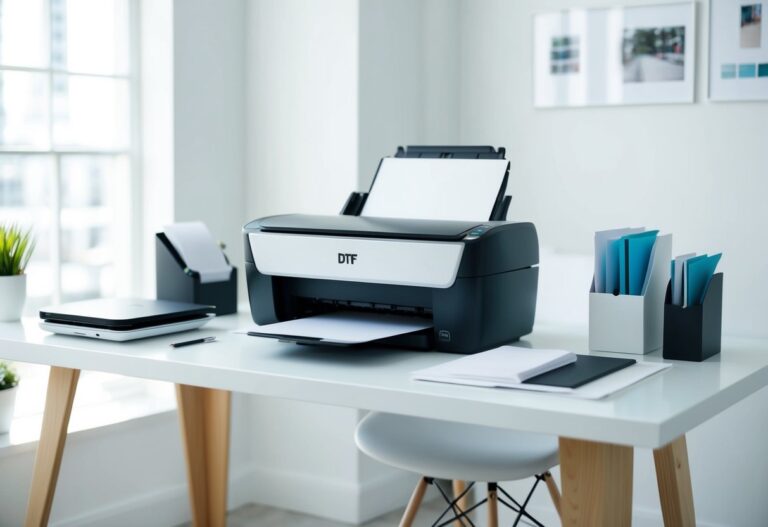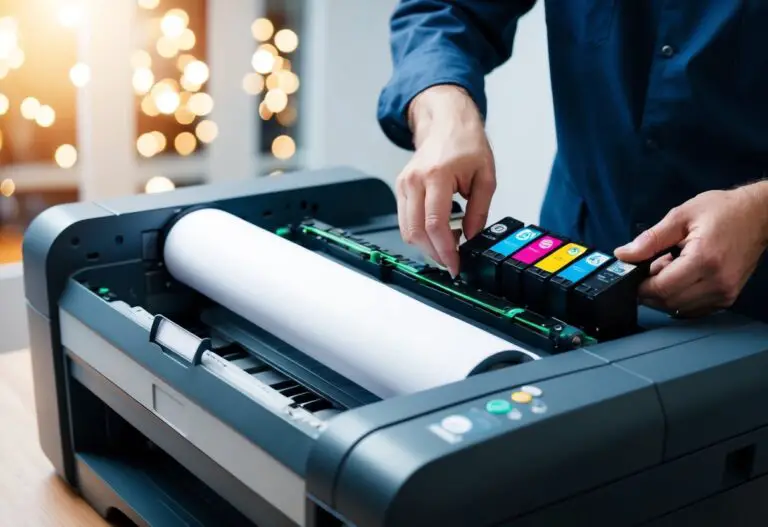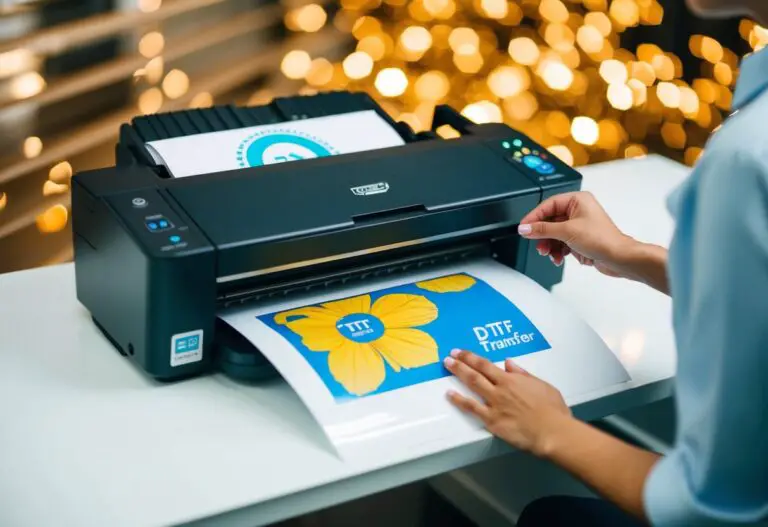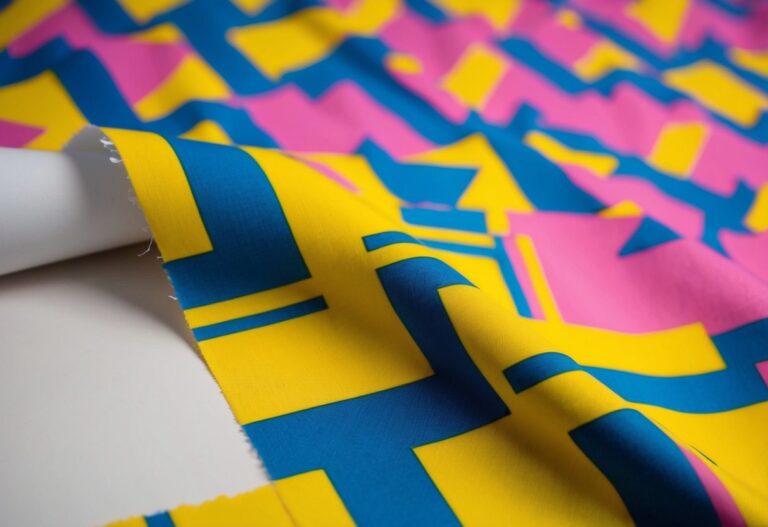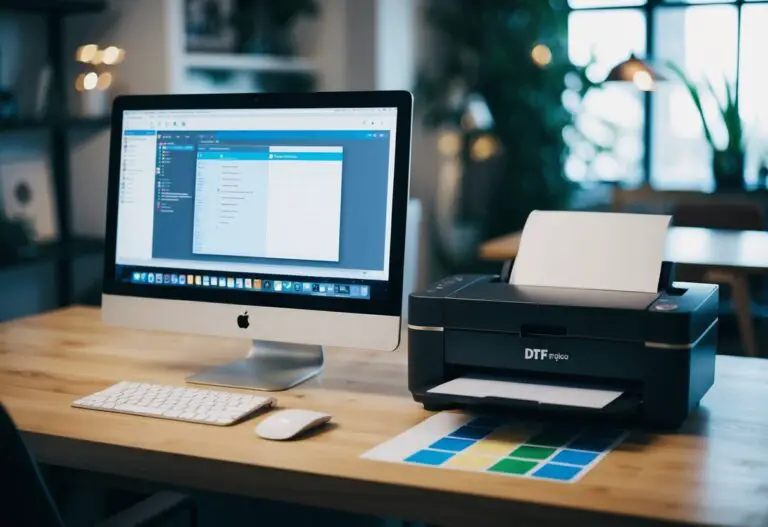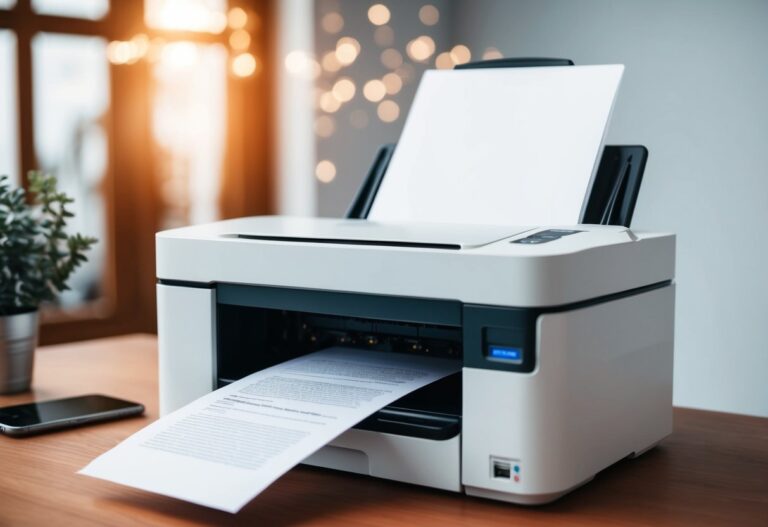DTF printing is shaking up the custom apparel world. You might be wondering how much this exciting technology costs. DTF prints typically range from $1.50 to $5 per design, based on size and color complexity.
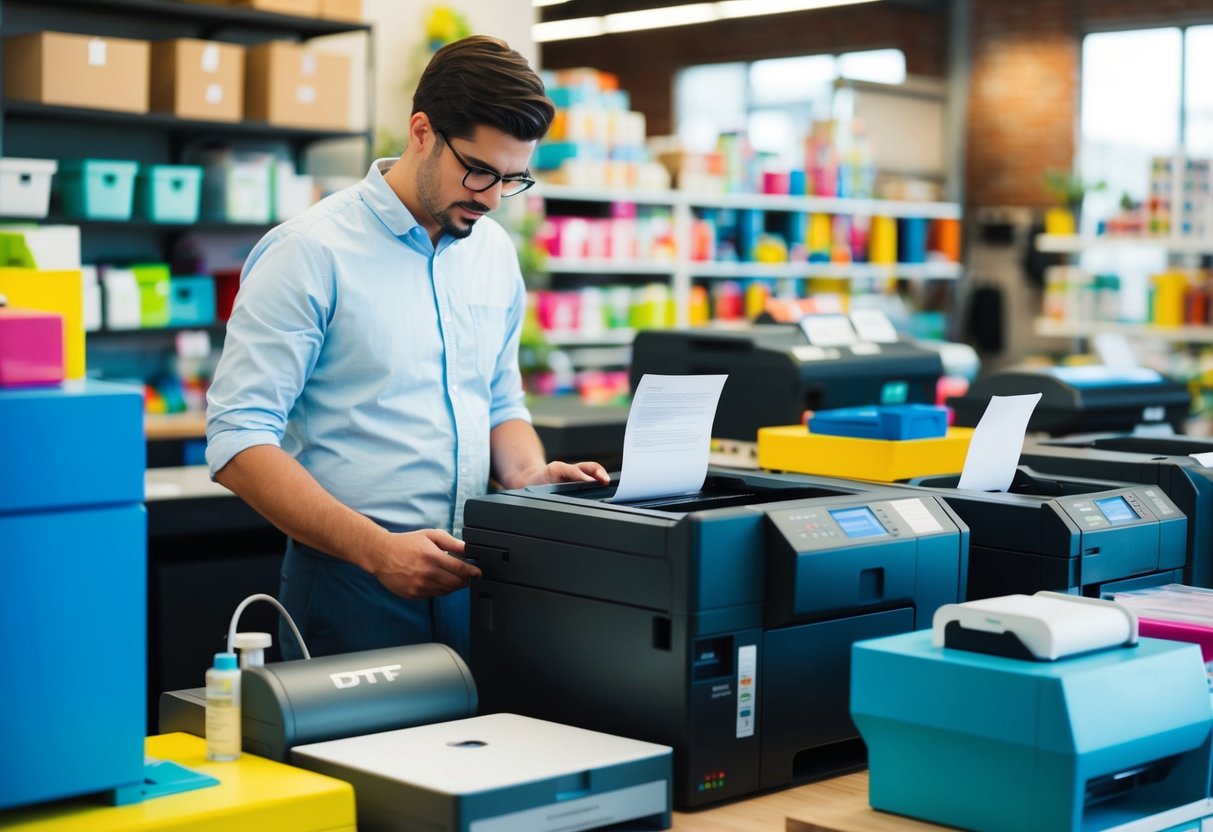
The price of getting started with DTF printing can vary widely. Printers cost anywhere from $1,500 to $15,000. But don’t let that scare you off. DTF printing can be a smart investment for your business. It offers flexibility and high-quality results that customers love.
When figuring out your DTF printing costs, remember to factor in supplies like film and powder. Your time is valuable too, so include labor costs in your calculations. With smart planning, you can keep costs down and boost your profits.
Key Takeaways
- DTF printing costs vary based on design complexity and order size
- Initial equipment investment ranges from budget-friendly to high-end options
- Careful planning of supplies and labor can help maximize DTF printing profits
Factors Affecting DTF Printing Costs
The cost of DTF printing depends on several key factors. Equipment is a major expense. You’ll need to invest in a DTF printer, which can range from $3,000 to over $20,000. A heat press and powder shaker are also necessary, adding $400 to $3,500 to your startup costs.
Materials play a big role in ongoing expenses. DTF film costs $0.50 to $2 per sheet. Ink runs $150 to $300 per liter set. The special powder used in the process is $20 to $50 per kilogram.
Labor is another important factor. You’ll need to pay operators $15 to $25 per hour to run the equipment. Don’t forget about electricity and regular maintenance costs for your machines.
Print quality affects pricing too. Higher quality prints often require more expensive materials and take longer to produce. The fabric type you’re printing on can impact costs, as some materials need special treatment.
Your printing volume matters. Larger orders typically have a lower cost per item due to economies of scale. Setting up each print job takes time, so smaller runs tend to cost more per piece.
Remember to factor in your initial investment when pricing jobs. It may take time to recoup the costs of your DTF setup.
Breakdown Of DTF Printing Costs
DTF printing costs can vary based on several factors. Let’s look at the main components that make up the overall expense.
Equipment is a big upfront cost. You’ll need a DTF printer, which can range from $5,000 for entry-level models to over $30,000 for high-end machines. A heat press is also essential, adding another $500-$2,000 to your startup costs.
Supplies are ongoing expenses. These include:
- DTF inks
- Transfer films
- Powder adhesive
- Blank t-shirts or other garments
The cost per print depends on ink coverage and size. A typical A4-sized transfer might cost $0.50 to $2. Larger prints or those with more colors will be pricier.
Labor is another factor to consider. You’ll need to account for the time spent setting up prints, operating equipment, and applying transfers to garments.
Using gang sheets can help reduce costs. By printing multiple designs on one sheet, you maximize material use and save on film costs.
Remember, your print costs will likely decrease as you gain experience and efficiency. Starting out, expect higher costs as you learn the process and dial in your workflow.
Comparing DTF Printing Costs To Other Methods
DTF printing costs less than other methods for small orders. You’ll save money with DTF if you’re printing 20-50 items or fewer. Screen printing costs more for small runs but gets cheaper for big orders.
DTF has lower startup costs than screen printing. You don’t need as much equipment or space. The per-print cost is also lower for small batches.
White toner printing is another option to consider. It’s similar to DTF in cost for small orders. But DTF often produces better quality prints on dark fabrics.
DTF printing saves time too. You don’t need to pretreat fabrics like with some other methods. This cuts down on labor costs.
Here’s a quick comparison:
- DTF: Best for small runs, low startup costs
- Screen printing: Cheaper for big orders, high startup costs
- White toner: Similar to DTF for small runs
- DTG: Higher per-print cost than DTF
Think about your order sizes when choosing a printing method. DTF shines for small, varied orders. But other methods may work better for large, identical runs.
Pricing Strategies For DTF Printing Services
When setting prices for your DTF printing services, you’ll want to consider several key factors. Print size and complexity play a big role in costs. Larger, more detailed designs typically cost more.
Order volume is another important element. You can offer discounts for bulk orders to encourage larger purchases. This helps you maximize profits while giving customers better value.
Turnaround time affects pricing too. Rush orders may come with an extra fee to account for the added pressure on your workflow.
Here’s a sample pricing structure to consider:
- Small prints (up to 5×5″): $5-$10
- Medium prints (5×5″ to 10×10″): $10-$20
- Large prints (over 10×10″): $20-$40+
You can adjust these ranges based on your specific costs and market. Remember to factor in customization options. Offering personalized designs or custom apparel may allow you to charge premium rates.
For t-shirts, you might price based on the print size plus a base cost for the blank shirt. This lets you clearly show customers how different design choices impact the final price.
Be sure to regularly review and update your pricing. Stay competitive while ensuring you’re covering costs and making a profit. Clear, upfront pricing helps build trust with your customers.
Cost-Saving Tips For DTF Printing
You can save money on DTF printing by buying supplies in bulk. This can cut your material costs by 10-20%. Plan ahead and stock up on essentials like film, ink, and powder.
Design your prints wisely to reduce waste. Fit multiple designs on one sheet when possible. This makes the best use of your materials and lowers costs per print.
Take care of your equipment. Clean your printer daily and do a deep clean monthly. Check parts regularly. This prevents breakdowns that can be expensive to fix.
Consider bringing printing in-house if you do high volumes. While the upfront cost is higher, it can save money long-term compared to outsourcing.
Keep an eye on shipping costs for supplies. Look for free shipping deals or local suppliers to trim expenses.
Use a cost calculator to track your expenses. This helps you price your products fairly and spot areas to improve efficiency.
Try different ink coverage levels in your designs. Lower coverage often means less ink used, which can add up to big savings over time.
ROI And Profitability Of DTF Printing
DTF printing can be a profitable business venture. With an initial investment of around $10,000, you can expect to break even within 6-12 months.
Profit margins in the DTF printing industry are quite attractive. You can aim for an average profit margin between 30-50% on your products.
Here’s a simple breakdown of potential earnings:
- Cost per print: $2-$4
- Selling price: $8-$12
- Profit per print: $6-$8
Your profitability will depend on several factors:
- Marketing costs
- Customer acquisition expenses
- Local competition
To maximize your ROI, focus on efficient production and smart pricing strategies. Keep an eye on your expenses and adjust your prices as needed.
Remember, the net profit per hour in DTF printing can reach up to $256.35. This means with consistent orders, you can generate a healthy income from your DTF printing business.
By offering quality prints and excellent customer service, you can build a loyal client base. This will help ensure steady orders and boost your long-term profitability.
Future Trends In DTF Printing Costs
DTF printing costs are likely to change in the coming years. You can expect to see some shifts that may affect your business or personal projects.
New printer models will probably hit the market soon. These machines could work faster and use less ink. This might help you save money on supplies and time.
Competition in the DTF market is growing. More companies are making printers and materials. This could lead to better prices for you when shopping for equipment.
Inks and films are getting greener. New eco-friendly options may cost a bit more at first. But they could save you money in the long run by using less energy.
You might see DTF printing expand to new materials. This could open up more ways for you to use the technology and possibly earn more.
Keep an eye on automated systems too. Robots and smart software could make the printing process quicker. This might cut down on labor costs for bigger print jobs.
Remember, these are just trends to watch. Actual costs will depend on many factors in the printing industry. Stay informed to make the best choices for your DTF printing needs.
Frequently Asked Questions
DTF printing costs can vary based on several factors. Let’s explore some common questions about pricing and cost calculations for this printing method.
What is the average cost per shirt for DTF printing?
The average cost per shirt for DTF printing ranges from $1.50 to $5. Simple designs with one color tend to cost less, around $1.50 per print. More complex designs with multiple colors can cost up to $5 per print.
Larger orders often result in lower per-shirt costs. Bulk pricing can help reduce expenses for bigger projects.
Can you provide a guide to DTF printing costs?
A basic DTF printing setup costs about $8,000. This includes a DTF printer, which starts at around $3,995. DTF inks add another $300 to the initial investment.
You’ll also need transfer films, powder, and a heat press. These materials contribute to the total cost of your DTF printing operation.
How can I calculate the estimated costs involved in DTF printing?
To calculate DTF printing costs, consider ink usage, transfer film, and powder. The design’s ink coverage affects material costs. A design with 10% ink coverage uses less ink and powder than one with 90% coverage.
Don’t forget to factor in shipping costs for supplies. For example, if 100 sheets of film cost $100 with $10 shipping, each sheet costs $1.10.
Labor costs and equipment maintenance should also be included in your calculations. These factors help determine the true cost of each print job.
